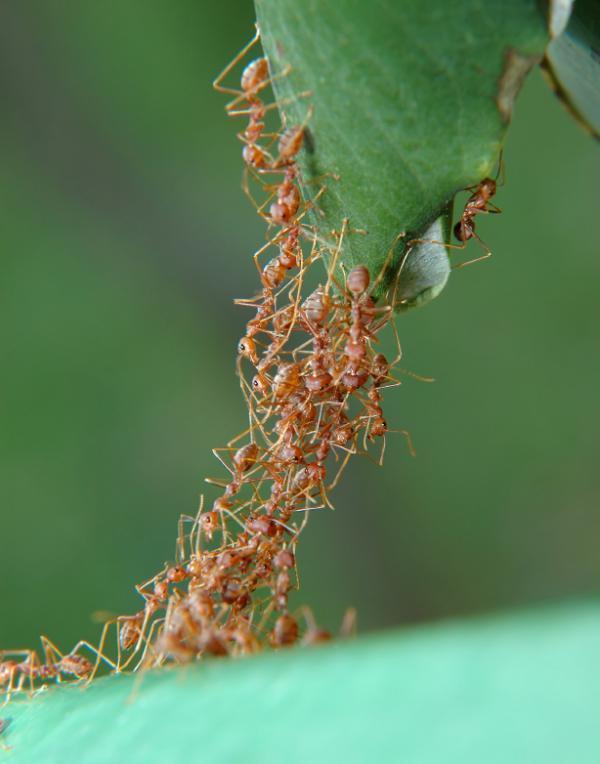Bees and ants have long been considered tireless workers, but a new study suggests they are also behaving like modern citizens.
Unlike bison or fish herds - where individuals seem to work in groups but behave according to their own preferences - some animals, such as ants and bees, actually have benefit from authentic teamwork.
The findings of the study seem to be an echo of the insect world illustrated in the film 'Antz and Bee' in which characters live in societies including citizens who adhere to rigorously.
Scientists at the University of Edinburgh and Oxford University have concluded by creating a mathematical model to study the way that animal groups, called superorganisms, grow.
 Ants work together to create a bridge to help other ants bring food back. (Photo: iStockphoto / Hung Meng Tan)
Ants work together to create a bridge to help other ants bring food back. (Photo: iStockphoto / Hung Meng Tan)
The study identifies two cases in which a group can act as a unit. The first case is when all members are closely related, sharing some genes; from there to ensure that genes will be passed on to the next generation. The second case is when the group's behavior is controlled by a group of 'policemen' - for example, in a honeycomb, any egg not laid out by a queen is destroyed by worker bees to ensure that only descendants of queen bees can exist. Both of these paths aim to ensure the unified participation of individuals to accomplish the same common goal.
Dr. Andy Garder of the School of Biological Sciences at Edinburgh University said: 'We often see animals that seem to work together, such as bison or fish. However, what looks like the common effort of the whole group is actually just the push of each individual trying to get into the middle of the herd to avoid the enemy '.
'In contrast, ant nests or beehives can act as a unified creature. In the beehive, worker bees are ready to help the community, even if they must die by the queen bore and pass on their genes. However, superorganisms are very rare, and exist only when internal disagreements in a social group are no longer available. Therefore we can use this term to describe human societies'.
The research was funded by the Royal Society.
Refer
Gardner et al.Capturing the superorganism: a formal theory of group adaptation.Journal of Evolutionary Biology, 2009;22 (4): 659 DOI: 10.1111 / j.1420-9101.2008.01681.x
 Animal 'suffering' after hibernation
Animal 'suffering' after hibernation Why do goats climb well?
Why do goats climb well? Scientists were surprised to see chimpanzees eating turtles
Scientists were surprised to see chimpanzees eating turtles Giant catfish died deadly due to drought in Thailand
Giant catfish died deadly due to drought in Thailand